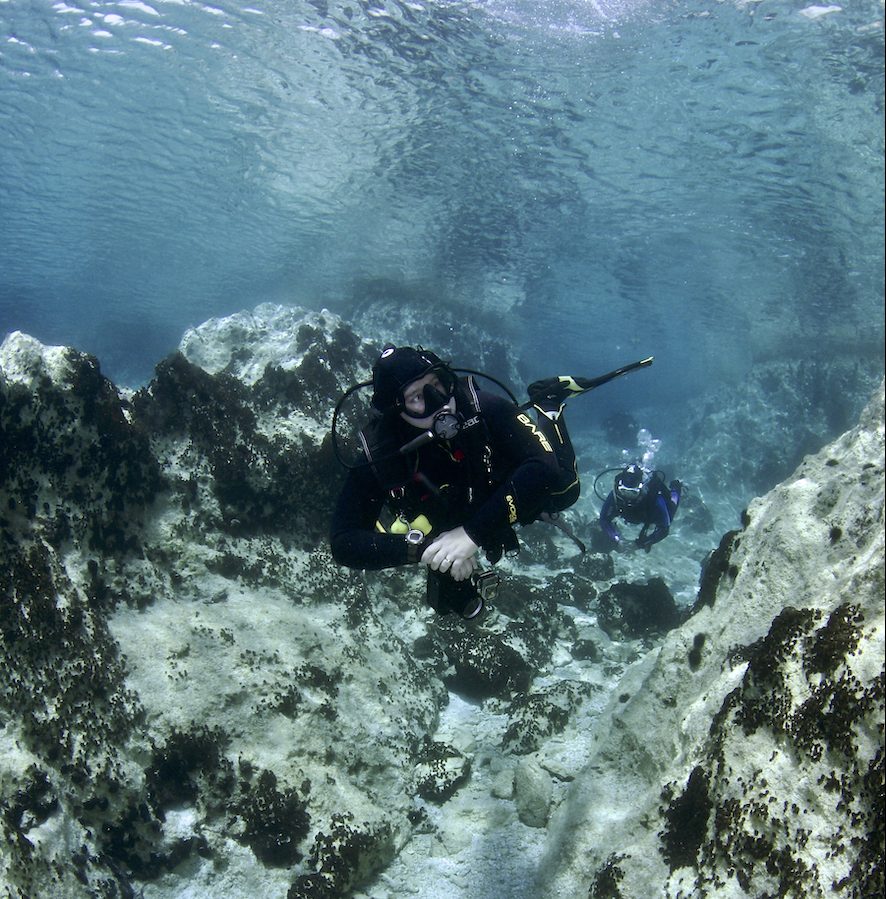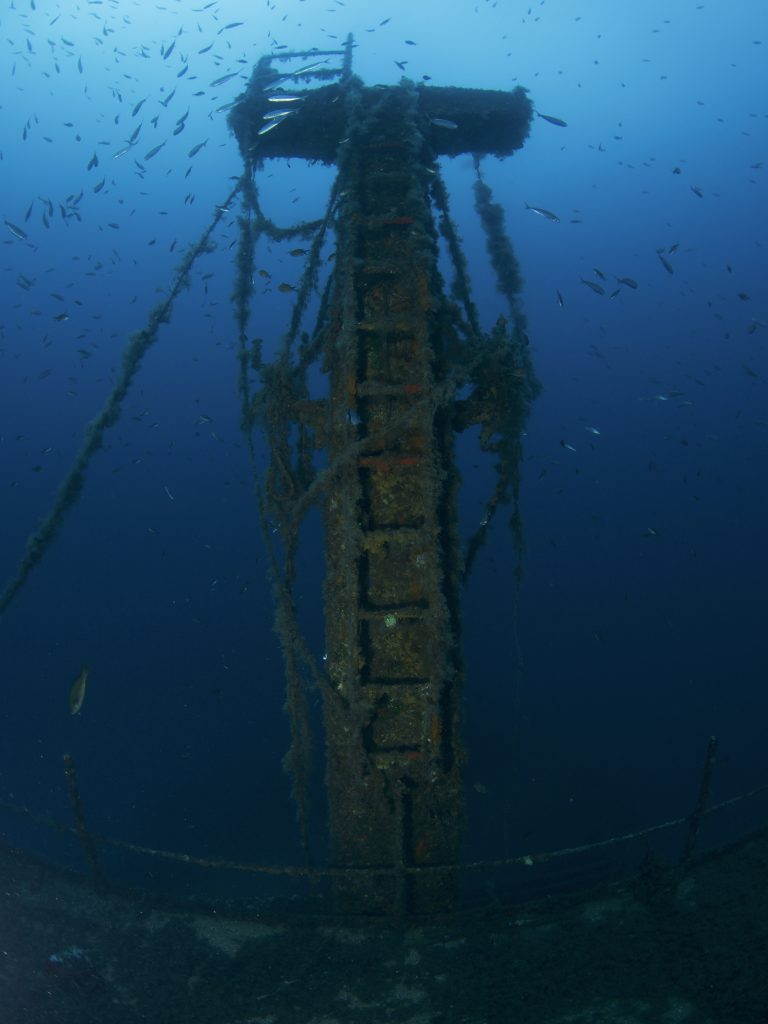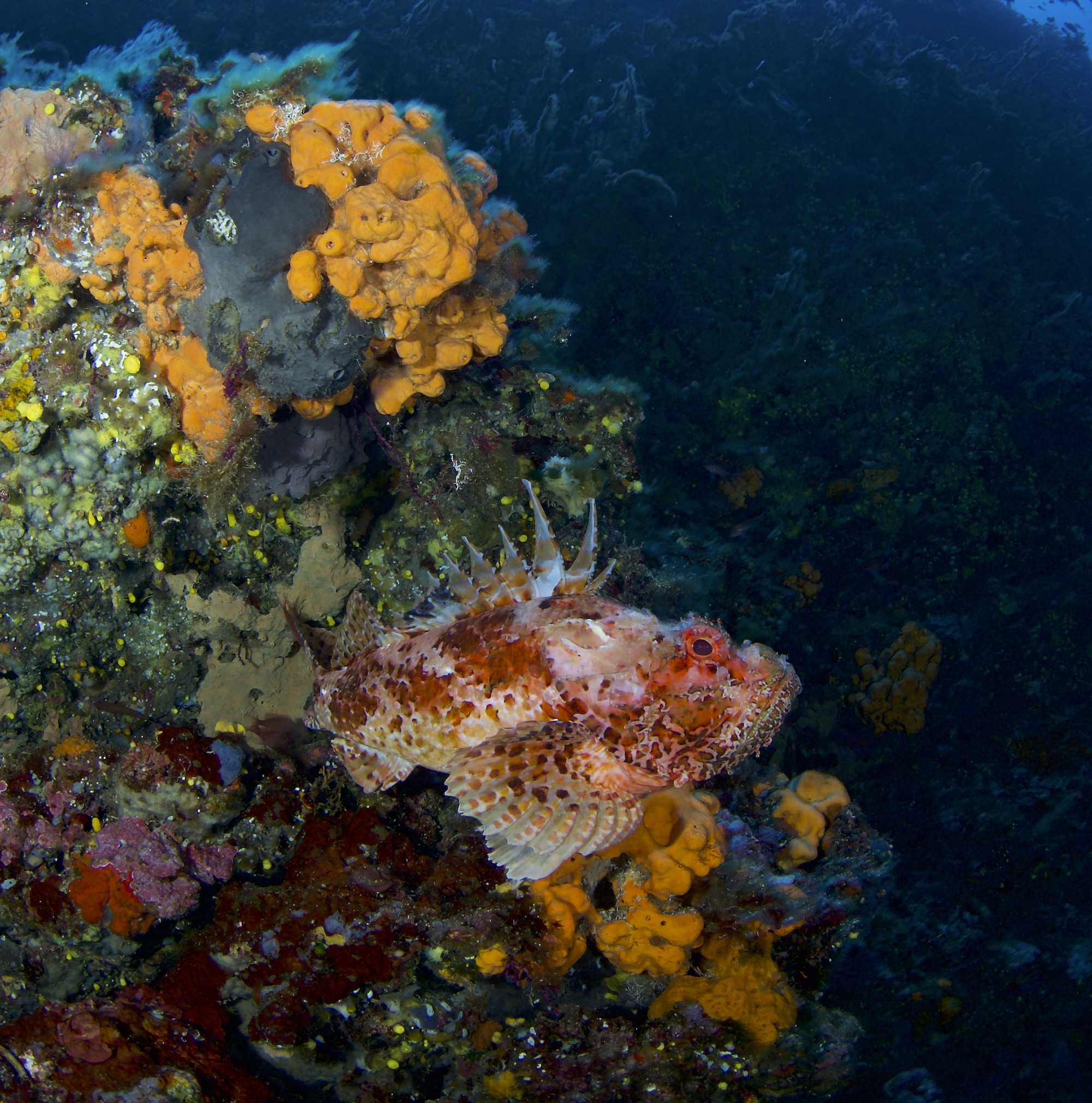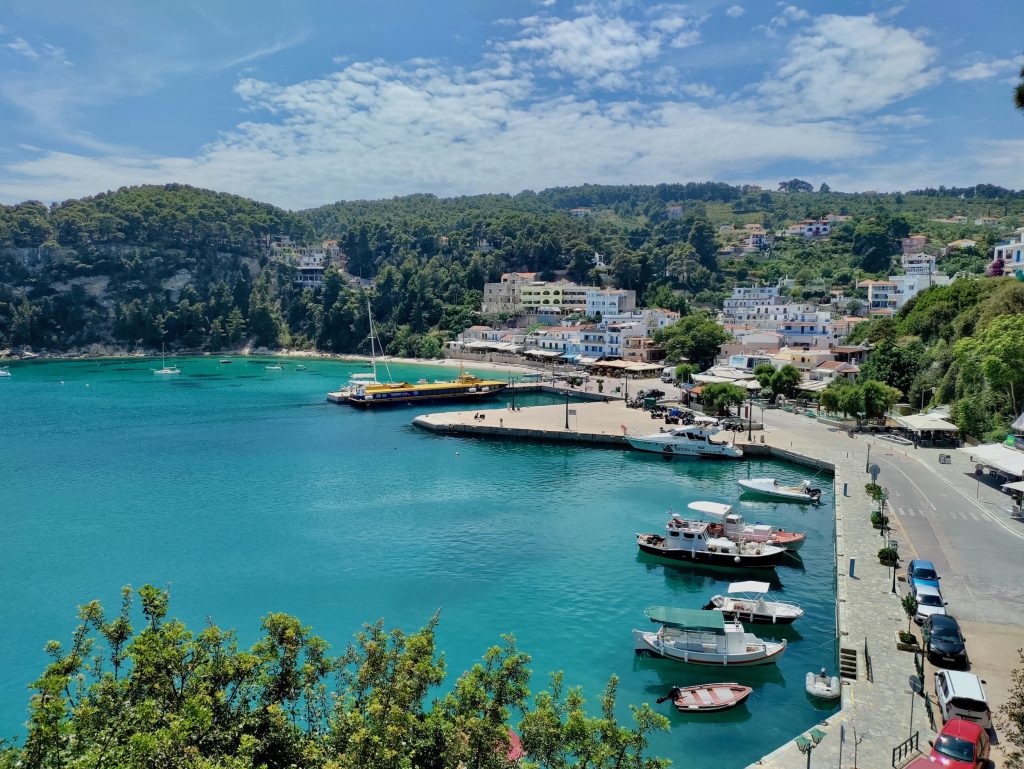Blogs
Dive Notes from a Small Island: Part 2 – Devon & Dorset

Mike and I had originally planned to dive in Plymouth, a couple of boat dives to the Scylla and JEL, or the reefs, but unfortunately the weather decided not to play and we got blown out. Moving on to Dorset we got a weather window to dive Swanage Pier, so taking advantage of the better conditions we decided to do a nice morning dive at high tide.

Dive 6: Swanage Pier
Site description:
The original Swanage Pier was first built in 1860, in the mid 1870’s it was found that a new and longer pier was needed for the increasing traffic, so the new pier was constructed by 1897. It was damaged in war time and from 1966 the pier was left to deteriorate for 30 years. In 1994 the Swanage Pier Trust took control in restoring the pier and making it available for local people and visitors to enjoy. As a dive site the new pier is considered better thank the old pier pilings that lies to the right hand side and it provides a sheltered, shallow dive site with easy access. It is no more than 5m at high tide and has variable visibility depending on recent weather, it is a good training site and can have lots of life both on the sea floor and on the pier posts. Parking costs £6 and it is £2.50 for each adult diver or £1 for a junior. It is also possible to take boats from here to dive the many wreck dives in the area.

The Dive:
We had 1-2m visibility and calm conditions at high tide. The sun streamed through from above us each side of the pier making navigation easy and we spent a thoroughly enjoyable 75mins pootling about looking for tompot blennies, painted topshells and velvet swimming crabs, which were in abundance!

Mike’s thoughts:
I’ve always liked critter-spotting pier dives and Swanage was really nice. The setup is about as perfect as you can get, with on-pier parking and dive shop, easy entry and pretty sheltered conditions. The sea life was abundant on the day we dove, and I managed to get several nice photos of tompot blennies. They are quite common in UK waters but being both charismatic and not terribly shy make for great subjects. The resident blennies did not disappoint as I was able to meet my main goal for the dive and get the pictures I wanted. I’d love to return on a day with better visibility as the conditions only allowed for fleeting glimpses of the pier structure through the murky water. No doubt a clear day with sunbeams shining through the pier would be even better!


Blogs
Why Skopelos should be your next summer dive destination!

Earlier this year we were given a fantastic opportunity to visit Skopelos in the Sporades Islands in the northern Aegean Sea. This green, mountainous island sits at the edge of the largest marine park in Europe, the National Marine Park of Alonissos and Northern Sporades. We were to focus primarily on scuba diving, but during our short stay we were especially impressed with the equally diverting topside options in Skopelos.

Our short stay meant we just got a glimpse of the great diving on offer, however our hosts at Skopelos Dive Center in Panormos treated us to some brilliant sites just a few minutes from shore. From nudibranchs, shoals of damselfish, large groupers and shy octopus to caverns and swimthroughs featuring rainbows of light. The variety of marine life and topography we encountered was outstanding.

One of the most incredible experiences was the chance to dive the wreck of the Christophoros, an 83m long cargo ship sitting upright on the seabed, with the deck at 32-35m. The large, well preserved and stunning wreck is a joy to dive. It is also located just a 2 minute boat ride from shore in a sheltered and current free location with great visibility, creating the conditions for a great dive. We had a few days of truly wonderful diving and we could certainly spend much longer in this fabulous holiday destination!

What makes Skopelos special?
This island is one of the less visited Greek islands with a very relaxed and friendly feel, even though it is really easy to get there – many airports in the UK offer flight connections directly to Skiathos (the hub of the Sporades) May through October. The diving is excellent and there are many dive sites to enjoy. Lastly, the variety of non-diving activities makes for a full vacation experience. Boat trips into the National Marine Park take you to visit secluded beaches and give you a chance to see some amazing wildlife, the Mamma Mia! tours are excellent fun, and numerous small, beautiful seaside villages with great tavernas and beaches are a delight to visit.


As a destination, Skopelos really has everything you could ask for both for a diving holiday and a fun summer vacation. Look for our full print article in an upcoming issue of Scubaverse’s own Dive Travel Adventures magazine!
Thanks to:
Municipality of Skopelos (https://skopelos.com/)
Skopelos Dive Center (https://sporadesdiving.gr/)
Ionia Hotel (https://www.ioniahotel.gr/en)
Dolphin of Skopelos (https://dolphinofskopelos.com/)
Ta Kymata restaurant (@takymata)
The Muses restaurant (https://www.facebook.com/TheMussesMousses/)
Aktaiov resturant (https://skopelos.com/listings/aktaion-taverna/)
Blogs
Amazing Alonissos – The all round dive vacation destination

In early summer we were given a wonderful opportunity to visit Alonissos in the Sporades Islands in the northern Aegean Sea. This green and forested island sits at the edge of the Alonissos National Marine Park, the largest marine protected area in Europe. Our main focus was to be scuba diving, but during our short stay we were especially impressed with all of the other activities and experiences available on Alonissos for the discerning vacationer.

The scuba diving was really outstanding. In contrast to some areas of the Mediterranean, the marine biodiversity here was impressively diverse and abundant. Our short stay meant we just had a small taste of the diving available, however our hosts at Alonissos Triton Dive Center treated us to some exceptional sites from their impressively long list. The variety of marine life we encountered was a delight: large Gorgonian sea fans, many species of nudibranchs, small pipefish to large groupers, octopus, and much more.

One of the most incredible experiences was the chance to dive the oldest accessible shipwreck in the world, the Ancient Shipwreck of Peristera underwater archeological site from 500 BC … an amazing dive site with a very unique automated underwater museum monitoring system in place to protect its archaeological heritage. It was a busy but hugely satisfying few days of diving and we could certainly spend much longer on this idyllic isle!

Greece has a huge number of beautiful islands to visit, so why choose Alonissos?
This island is one of the quieter Greek islands and as such has a very relaxed and welcoming feel, where you can find an authentic slice of the Aegean region. And, it is really easy to get there — so many airports in the UK offer flight connections directly to Skiathos (the hub of the Sporades) that you should not have to drive more than 100km in the UK to an airport.

Finally, the variety of non-diving activities is hard to beat. There are boating day trips into the National Marine Park, taking you to visit secluded beaches and giving you a chance to see some amazing wildlife (such as monk seals, Eleonora’s Falcon, and several species of dolphin to name a few). Both the main port town of Patitiri and the old village of Chora are full of interesting shops, charming alleyways, and restaurants with delicious meals. As an added bonus, the Alonissos cheese pie is a particularly moreish local specialty!
As a holiday destination, Alonissos really had everything one could ask for. Look for our full print article in an upcoming issue of Scubaverse’s own Dive Travel Adventures magazine!

Thanks to:
The Municipality of Alonissos (https://alonissos.gr/en/)
Alonissos Triton Dive Center (https://bestdivingingreece.com)
Alonissos National Marine Park (https://alonissos.gr/en/marine-park/overview.html)
Paradise Hotel (https://paradise-hotel.gr/)
Albedo Travel (https://alonissosholidays.com/)




















